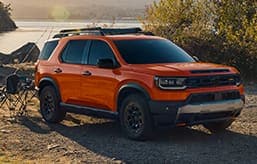- General Motors is the latest automaker to gain access to Tesla's Supercharger network.
- We ordered a NACS-CCS adapter for our long-term Chevy Blazer EV.
- Here's what it's like to charge a GM EV at a Tesla Supercharger station.
Charging a GM EV at a Tesla Supercharger: Everything You Need to Know
Good, but a better experience is coming soon
It's been well over a year since General Motors announced that owners of Cadillac, Chevrolet and GMC electric vehicles would be able to charge at Tesla Supercharger stations. While GM EVs with built-in Tesla-style charge ports aren't due until 2025 at the earliest, the automaker recently launched its official NACS-to-CCS adapter that allows current owners to tap into the Supercharger network. The simple adapter adds about 17,800 Tesla charging points to the roughly 21,600 DC fast-charging stations currently in operation in the U.S. and Canada.
So, how do you get an adapter, and what is the charging process like? To find out, we purchased an official adapter for the 2024 Chevy Blazer EV we bought for our long-term test fleet. Here's how it all works.
Am I Ready for an EV?
- EV ownership works best if you can charge at home (240V outlet) This typically means a 240V home installation, or other places your car is parked for several hours each day. Don't expect a regular household outlet (120V) to suffice.
- Adding a home charging system is estimated to cost $1,616 in This is an estimate for your area. Using your address and the answers you provide, Treehouse can provide a more accurate price.
- Edmunds is partnering with Treehouse, an independent provider of home EV installation services. Learn more Edmunds customers receive a 10% installation discount and 4% smart charger discount. Discount excludes permit, hosted inspection, and load management devices. Valid for 30 days.
How do I get a Tesla adapter for my General Motors EV?
The process to get an official adapter from GM isn't as simple as getting one from Ford — owners of a Blue Oval EV merely need to visit Ford's accessories store. To secure an adapter from GM, you start by logging in to the brand-specific mobile app (in our case, the myChevrolet app). Assuming your myChevrolet account is linked to an OnStar account and your EV is attached to your myChevrolet account, you tap on your initials in the app and select "Public Charging." From there, you authorize app payments for the Supercharger network. Then, you can finally order a NACS DC adapter for a cool $225, which can either be shipped to a local dealer or your home. Including charges for shipping and tax, our adapter set us back $252.41.
Plugging in wasn't totally seamless
Tesla owners who plug into a Supercharger station have what is undoubtedly the easiest charging experience across the board. After you set up your in-app account and add a credit card to authorize payments, all you do from then on is connect the Supercharger plug to your car's NACS port. That's it. A number of other EVs and networks communicate with each other to support the Plug and Charge protocol, which means you don't have to fuss with authorizing a charging session using an app every time you plug in.
That wasn't our experience with charging the Blazer EV at a Supercharger, however. We connected the adapter, plugged in the Tesla charging cord and waited a few moments. We didn't hear the telltale clunks and whirs of the station activating, and the Blazer's instrument panel didn't show charging input. We opened the app, selected the individual station and authorized the session. Within seconds, the Supercharger unit clanged to life, and we were off to the races. Chevy currently supports Plug and Charge on the EVgo network (the two entities have a partnership, and some EVgo stations bear GM's Ultium branding) and a GM spokesperson confirmed the company is working on a similar experience for the Supercharger network.
Otherwise uneventful
The Blazer (and other electric vehicles from non-Tesla companies) can only charge at newer Superchargers — something we noted when we tested Supercharging our long-term Rivian R1T — as they support higher charging rates than older stations. The Chevy's maximum of 150 kW is well below the threshold that most Superchargers are capable of delivering, but only the newer Superchargers won't split power between adjacent stations tapping into the same cabinet. That means you'll get full power whether or not there's someone charging in the next stall over.
I plugged in the Blazer EV and it immediately began pulling the car's maximum of 150 kW before settling down as it followed the Blazer's typical charging curve. The session wasn't out of the ordinary, and I unplugged after hitting my 80% charge limit. Receipts show I paid $41.42 for 62.75 kWh of electricity, for an average cost of 66 cents per kWh. The nearby EVgo array I usually use charges 64 cents a kWh. Given that the Supercharger premium amounts to less than $1.50 for a normal charging session, I'll probably use the Tesla station when I need to charge the Blazer near my home. There are a lot more charging stations compared to the nearby EVgo cluster, which means there's less of a risk I'll need to wait for a vacant charging space.







 by
by  edited by
edited by